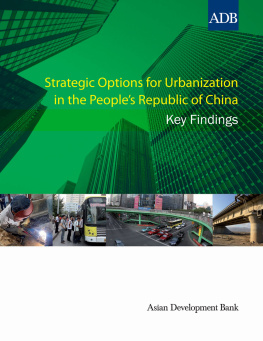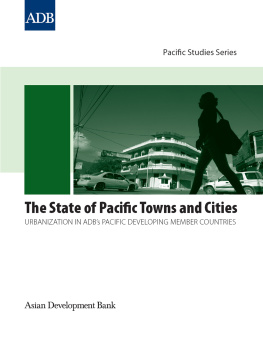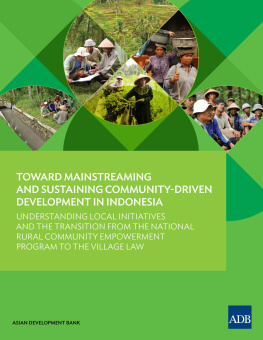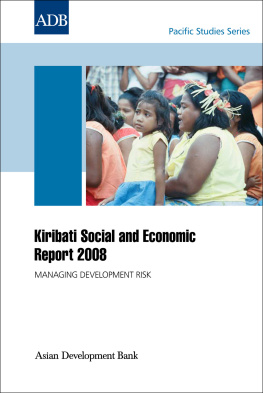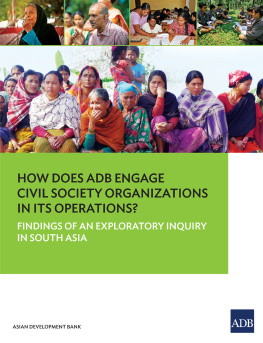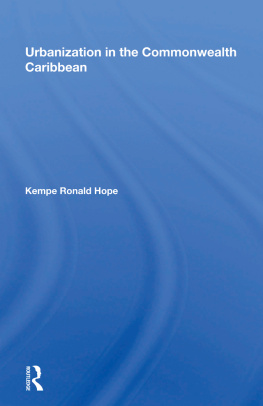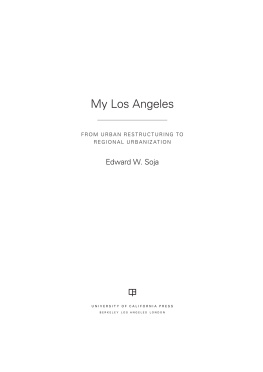Strategic Options for Urbanization in the Peoples Republic of China
Key Findings
Asian Development Bank
2013 Asian Development Bank
All rights reserved. Published 2013.
Printed in the Philippines.
ISBN 978-92-9254-248-1 (Print), 978-92-9254-249-8 (PDF)
Publication Stock No. RPT135557-2
Cataloging-in-Publication Data
Asian Development Bank.
Strategic options for urbanization in the Peoples Republic of China: Key findings. Mandaluyong City, Philippines: Asian Development Bank, 2013.
1. Urban development. 2. Peoples Republic of China. I. Asian Development Bank.
The views expressed in this publication are those of the authors and do not necessarily reflect the views and policies of the Asian Development Bank (ADB) or its Board of Governors or the governments they represent.
ADB does not guarantee the accuracy of the data included in this publication and accepts no responsibility for any consequence of their use.
By making any designation of or reference to a particular territory or geographic area, or by using the term country in this document, ADB does not intend to make any judgments as to the legal or other status of any territory or area.
ADB encourages printing or copying information exclusively for personal and noncommercial use with proper acknowledgment of ADB. Users are restricted from reselling, redistributing, or creating derivative works for commercial purposes without the express, written consent of ADB.
6 ADB Avenue, Mandaluyong City
1550 Metro Manila, Philippines
Tel +63 2 632 4444
Fax +63 2 636 2444
www.adb.org
For orders, please contact:
Public Information Center
Fax +63 2 636 2584
Contents
Figures, Table, and Boxes |
Foreword |
Acknowledgments |
Abbreviations |
Introduction |
I. The Pace and Scale of Urbanization in the Peoples Republic of China |
II. Analysis of Key Urbanization Issues |
A. Impact of Urban Development on the Natural Environment |
B. Real Estate Prices and Affordability of Housing |
C. Municipal Finances as a Determinant of the Pattern of Urban Growth |
D. Social Services and Protection for Migrant Workers |
III. Urbanization Strategy Proposals |
A. Achieving Environmentally Sustainable, People-Friendly Urban Development |
B. Urban Land and Housing Markets |
C. Expanding and Rationalizing Municipal Finances |
D. Reforming the Urban Administration System |
E. Integrating Migrant Workers into Urban Society |
F. Redefining Successful Urban Development |
IV. Toward Implementation of the Proposed Strategy |
References |
Figures, Table, and Boxes
Figures
1 Percentage Share of Urban Population in the PRC Total Population, 19492011 |
2 Major Reform Components and Impacts |
Table
Short- and Medium-Term Actions Under the Urban Development Strategy by Reform Component |
Boxes
1 The Environmental Impacts of Changes in Household Size |
2 Reform of the Household Registration System |
Foreword
Unprecedented urbanization has highlighted many challenges facing the development and operation of cities in the Peoples Republic of China (PRC). The magnitude of these challenges is likely to grow over the medium term, as the governments National Development and Reform Commission (NDRC) estimates that the countrys urban population will grow by nearly 15 million people each year over the coming 15 years. Significant changes to basic urban management and planning policies are thus required if the future livability, urban form, and environment of these cities are to meet the expectations of urban residents with rapidly rising incomes. More broadly, as the worlds second-largest economy, the direction of urban and environmental management in the PRC will have wide-ranging impacts at the global scale.
Since 2004, the Asian Development Bank (ADB) has supported the NDRC in carrying out urbanization strategy research. The policy study on which this report is based was prepared in 20112012 as an input to the PRCs forthcoming national urbanization plan, which will set out detailed policies and guidelines for urban development over the coming decade.
The research team that prepared the policy study conducted five theme studies focusing on problems relating to urbanization in the PRC. These studies included: (i) a Study on the Route and Pattern of the PRCs Urbanization, (ii) a Comparative Study on Urban Spatial Layout and Structure in the PRC, (iii) the Environmental Challenges to, and Countermeasures for Addressing the Challenges Confronting Urbanization in the PRC, (iv) a Study on Regional Transportation Development under the PRCs Urbanization Strategy, and (v) a Study on the Key Institutions Relating to Urbanization in the PRC.
The policy studys findings and recommendations were well received by the NDRC. On 17 August 2012, the NDRC and the China Center for Urban Development jointly presented the policy study to members of ADBs Urban Community of Practice, as well as other staff members at ADB headquarters in Manila.
While the PRCs urbanization challenges are unique in terms of their scale, some of the policy proposals set out in this report are relevant to countries facing large-scale internal migration, former socialist economies that are reforming place-based public service delivery systems, and rapidly industrializing countries in general. In particular, broadening the definition of successful urban development to include not only economic performance, but also environmental and social outcomes would greatly benefit cities both in Asia and elsewhere.
Ayumi Konishi
Director General
East Asia Regional Department
Asian Development Bank
Acknowledgments
This report is an output of Policy Study on Strategic Options for Urbanization, a technical assistance project financed by the Asian Development Bank (ADB). The report was prepared by the China Center for Urban Development (CCUD) with technical support from AECOM Technical Services, an urbanization consulting firm operating at the global level. The study team was led by Li Tie, Director General of the CCUD. Team members who participated in the preparation of this report included Fan Yi, Xu Qinxian, and Li Ke. John Bachmann provided technical support on behalf of AECOM Technical Services.

